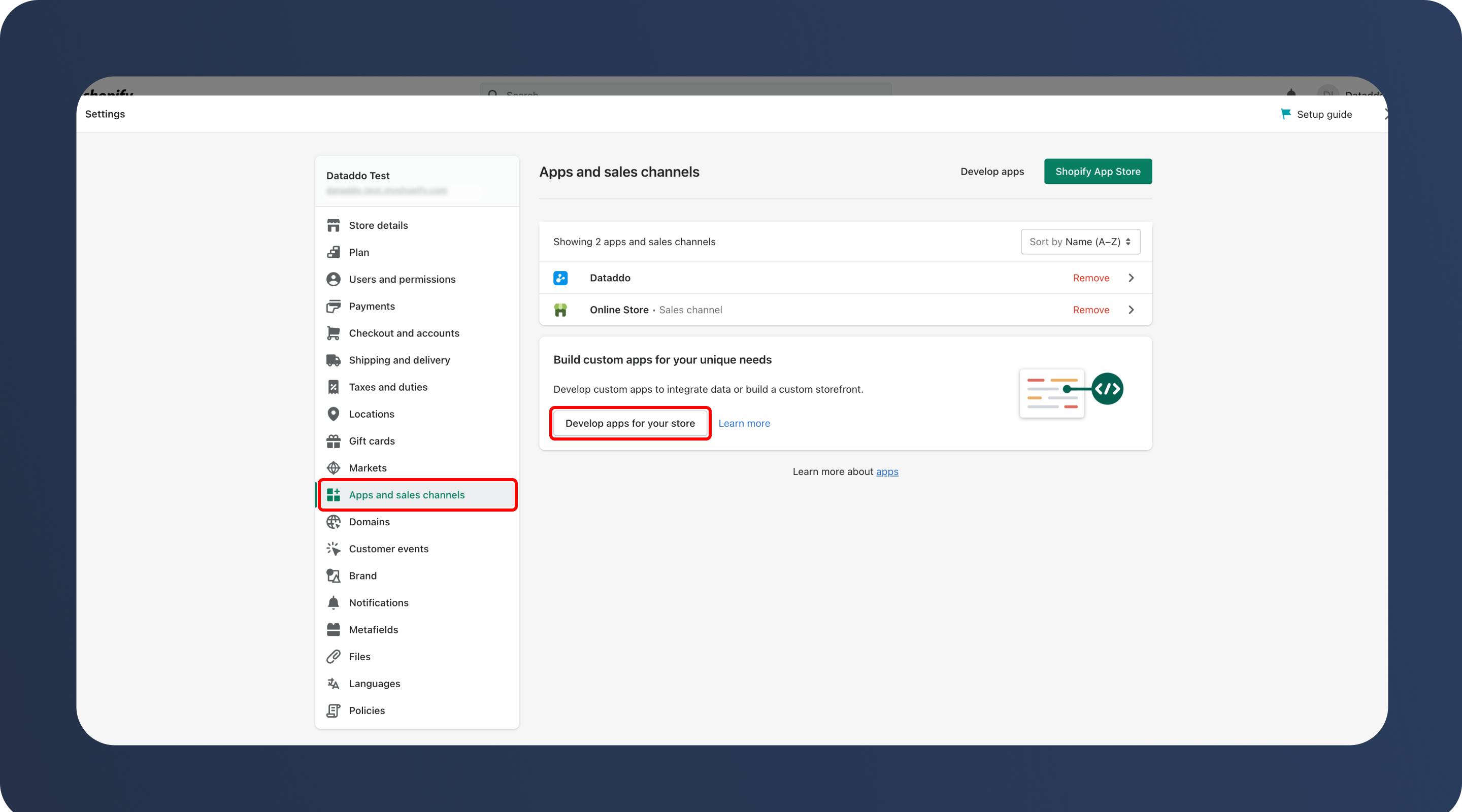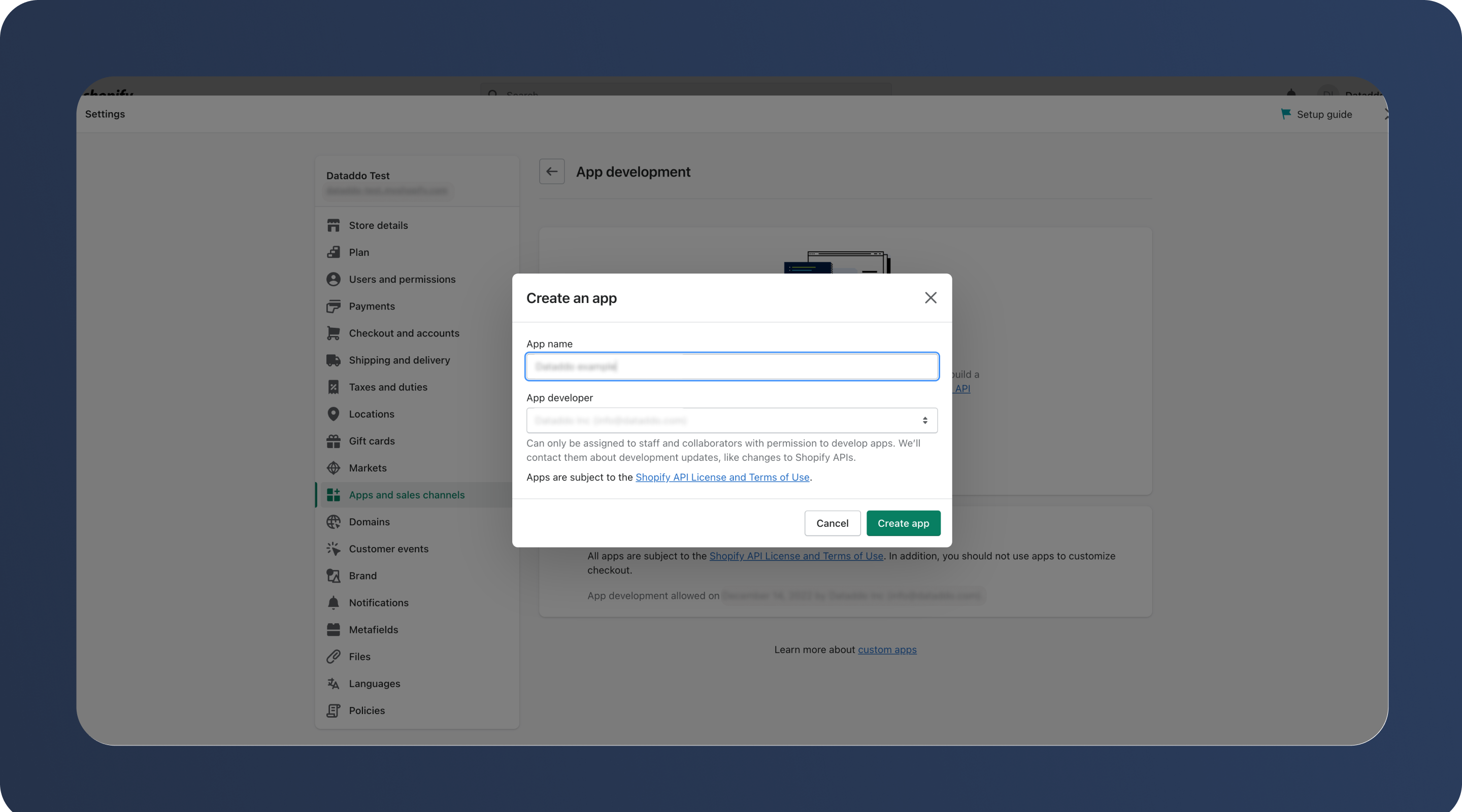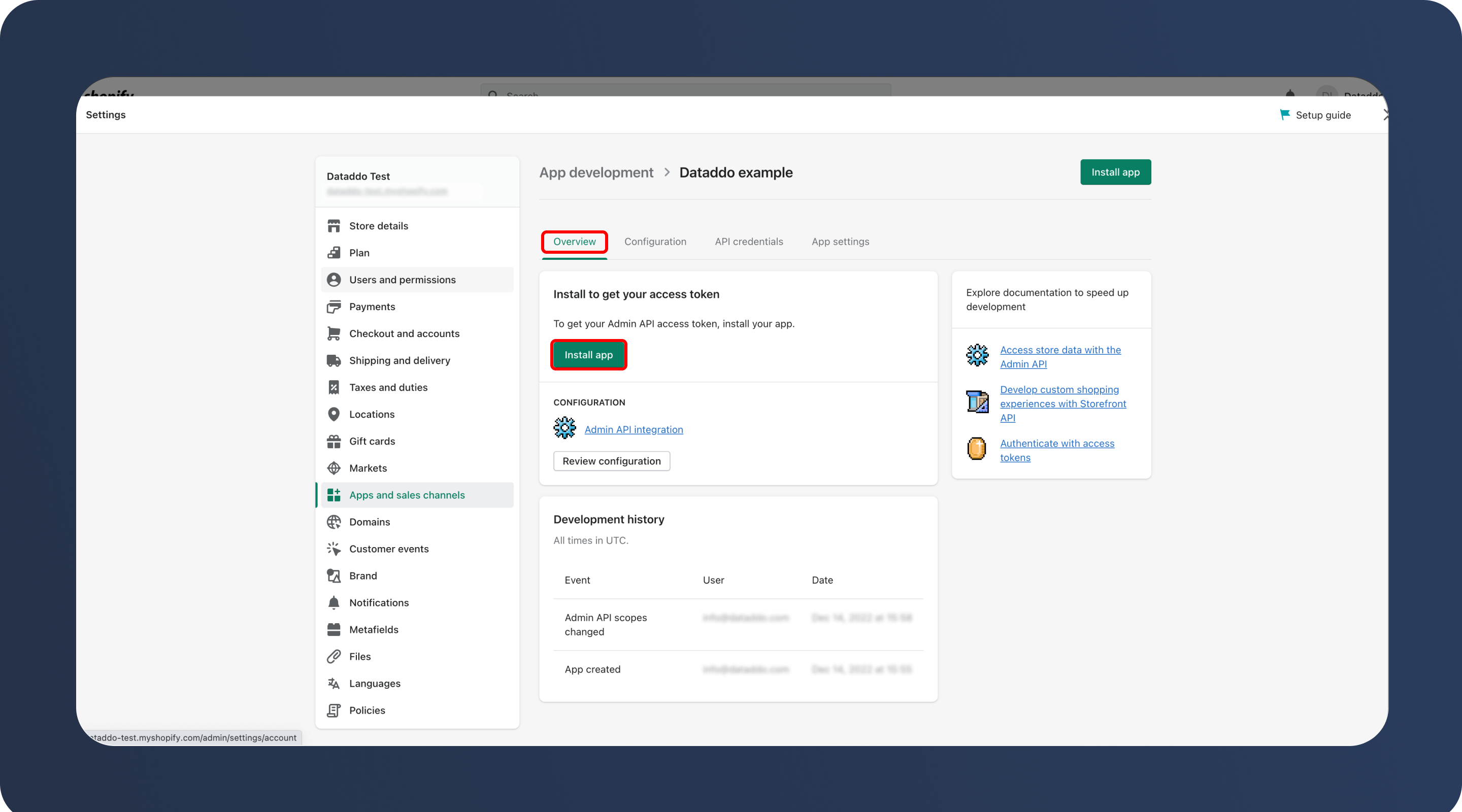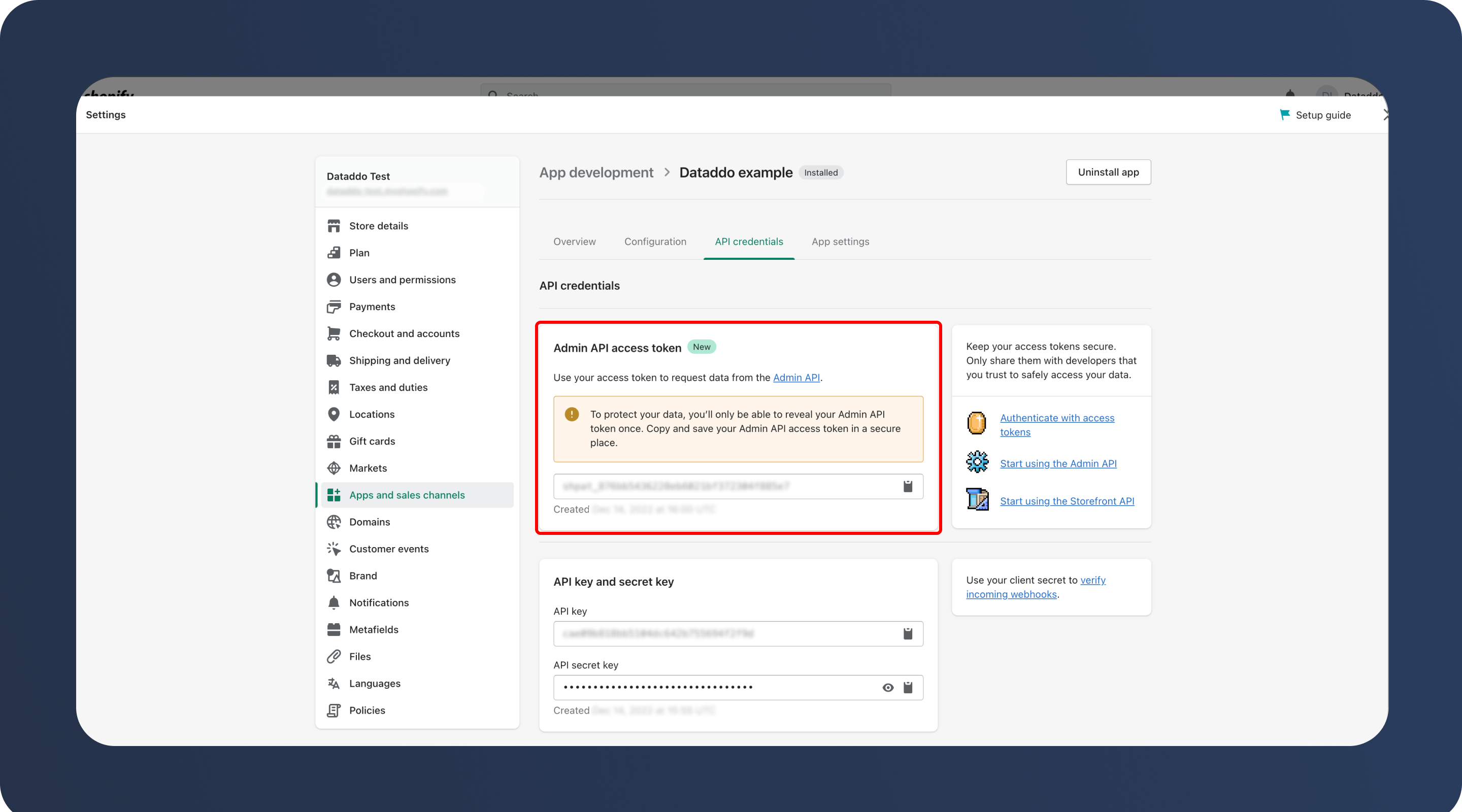Shopify is an e-commerce platform that allows businesses to create online stores and sell products or services. It provides a range of tools and features for inventory management, order processing, payment integration, and website customization, enabling businesses to easily set up and operate their online storefronts.
Refer to our website for the list of metrics and attributes available in Dataddo.
Refer to Shopify's official documentation to see all available endpoints from the Shopify API.
Authorize Connection to Shopify
In Shopify
To authorize your Shopify account, you will need your API access token.
- In your Shopify account, navigate to the Settings at the bottom left of your screen.
- Select Apps and sales channels and click on Develop apps for your store. Follow the prompts to allow custom app development.

- Click on Create an app and name your app.
- Continue with configuring admin API scopes.

- Select all the permissions you would like for Dataddo to access and save. Here, we added
read_orders,read_customers, andread_products,read_fulfillments,read_assigned_fulfillment_orders,read_merchant_managed_fulfillment_orders,read_third_party_fulfillment_orders,read_marketplace_fulfillment_orders.

- Go back to the Overview tab and click on Install app. Copy your API Admin Access Token under the API credentials tab.
 Please keep in mind that you can reveal the token only once.
Please keep in mind that you can reveal the token only once.
In Dataddo
- On the Authorizers page, click on Authorize New Service and select Shopify.
- Fill in the following fields:
- Subdomain: Shopify subdomain name, aka the name of your shop=. E.g.
agencynamefromcoolagency.myshopify.com. - Access Token: Your Shopify API access token.
. Rename your authorizer for easier identification and click on Save.
- Subdomain: Shopify subdomain name, aka the name of your shop=. E.g.
How to Create a New Shopify Data Source
- On the Sources page, click on the Create Source button and select the connector from the list.
- Select your dataset and click on Next to continue.DATADDO TIP
If you are not sure which dataset you need but know the metrics and attributes, use the Search by Name or Attribute function.

- From the drop-down menu, select your authorizer.Didn't find your authorizer?
Click on Add new Account at the bottom of the drop-down and follow the on-screen prompts. You can also go to the Authorizers tab and click on Add New Service.
- Name your data source and select your metrics and attributes. Keep in mind that metrics and attributes depend on the selected dataset.
- Configure your sync frequency or the exact synchronization time under Show advanced settings.DATADDO TIP
If you need to load historical data, please refer to the Data Backfilling article.
- Preview your data by clicking on the Test Data button in the top right corner. You can adjust the date range for a more specific time frame.
- Click on Save and congratulations, your new data source is ready!
Limitations
Multi-Account Extraction
If you have multiple Shopify accounts and would like to extract the same data from all of them, you can do it via data union.
Troubleshooting
Data Preview Unavailable
No data preview when you click on Test Data might be caused by an issue with your source configuration. The most common causes are:
- Date range: Try a smaller date range. You can load the rest of your data afterward via manual data load.
- Insufficient permissions: Please make sure your authorized account has at least admin-level permissions.
Insufficient Scopes Error
ERROR MESSAGE
Cannot Access Data: Insufficient Scopes
If you cannot access some of your data, please double-check which permissions you've given to Dataddo. In majority of cases, you will need to add additional permissions to your account.
Example
To gain access to the fulfillmentOrders field (Orders dataset), make sure you give Dataddo at least one of the following scopes:
read_assigned_fulfillment_ordersread_merchant_managed_fulfillment_ordersread_third_party_fulfillment_ordersread_marketplace_fulfillment_orders
Related Articles
Now that you have successfully created a data source, see how you can connect your data to a dashboarding app or a data storage.
Sending Data to Dashboarding Apps
Sending Data to Data Storages
Other Resources